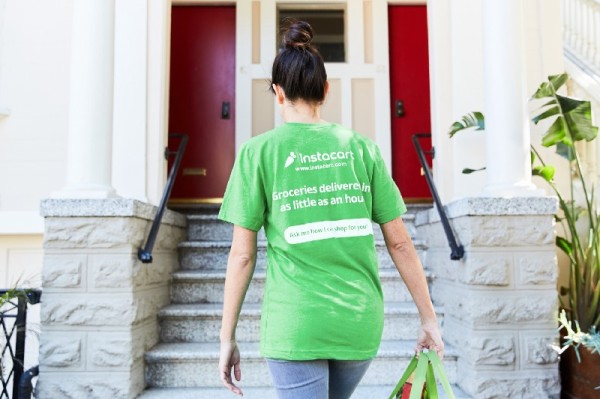Despite plenty of uncertainty swirling around Instacart and its complex relationship with Whole Foods — now owned by Amazon — investors still seem to not be too worried, and are pouring a fresh big round of financing into the startup that values it at $4.2 billion.
Instacart said it raised $200 million in a new funding round this morning led by Coatue Management, as well as Glade Brook Capital Partners and existing investors. Instacart was last valued at $3.4 billion in a financing round in March last year — but that was prior to Amazon saying it would acquire Whole Foods in June. Instacart, to be sure, has a very wide network of grocery providers and partners, but Whole Foods was seen as one of the largest in urban areas in the United States. Instacart has raised close to $900 million in total funding.
Amazon just last week began testing two-hour delivery for groceries from Whole Foods with its Prime service. It wasn’t entirely clear how Amazon’s acquisition of Whole Foods (which is an investor in Instacart) was going to play out in Instacart’s market — much like it’s not clear yet how it will affect Blue Apron’s — but we’re starting to see some signs that they will be bumping heads very soon. Instacart has had years to build up that brand and customer network, but so has Amazon with its array of services beyond Prime.
Given that pending challenge, Instacart is going to have to find new ways to outmaneuver Amazon as it tries to drive into some of its biggest markets. That could include expanding beyond areas where Amazon currently has a foothold, something it can do thanks to its structure for acquiring new partners and then tapping them with a network of couriers and shoppers. That platform-level approach could be appealing to grocery providers looking for an edge against Amazon and Whole Foods, but also looking for a neutral third party. The company signed on Albertsons in November, for example, and can continue to tack on those additional chains.
Still, as we’ve seen time and time again, Amazon has a custom of investing in new businesses that seem at times nearly perpendicular to its core business but over time begin to make more and more sense. Owning a grocery store and connecting that with Prime is just one early sign, and it may be that Instacart was able to raise just enough money just in time to figure out where to go as Amazon begins trying to aggressively court its already-existing Prime customers into using a grocery delivery service as well.
